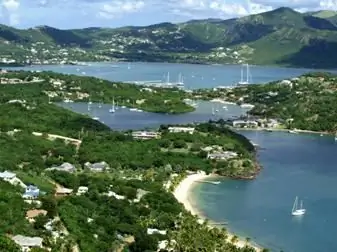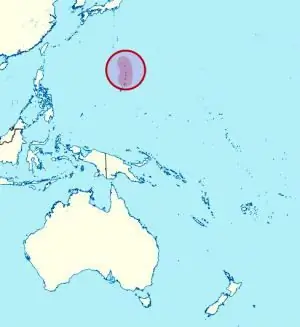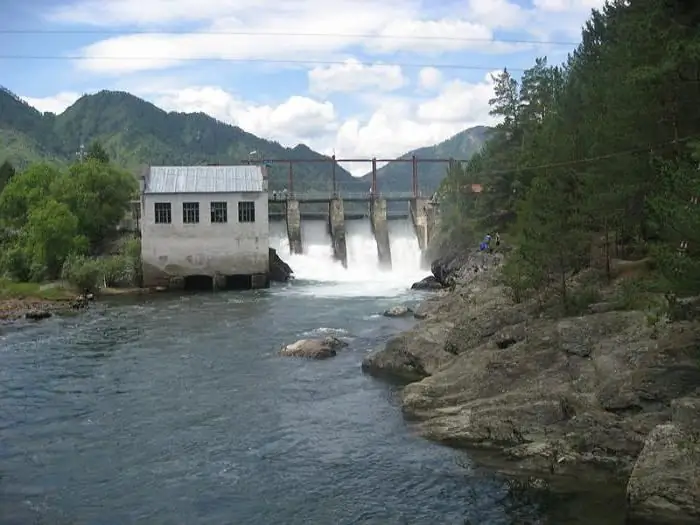- Author Harold Hamphrey [email protected].
- Public 2023-12-17 10:06.
- Last modified 2025-06-01 07:20.
The Solovetsky Islands are a unique place. On a small archipelago in the White Sea, a unique natural, historical and cultural complex has developed, which has no analogues in the world. The largest and richest in sights is Solovetsky Island, on which the famous Solovetsky Monastery has been operating for more than one century.

Nature
The islands arose 9000 years ago at one of the stages of the formation of the White Sea, when after the melting of a large glacier there was a compensatory uplift of the soil. 2/3 of the entire area of the archipelago is occupied by Bolshoi Solovetsky Island.
The archipelago is located in the taiga zone. The landscapes of the islands are unusually picturesque and diverse: high hills give way to lakes, flowering meadows - vast swamps. 70% of the area is covered with forests, mainly spruce and pine. About 5% of the area is occupied by tundra complexes. Dry crowberry tundras are characteristic ofcoastal zone, where they are followed by a strip of crooked birch forests (spiny birch). In the central part of the islands, birch and aspen forests appear at the site of clearings and fires. Meadows on the coast and in the center of the islands occupy 0.1-0.2% of the total area and are characterized by a rich species composition of meadow vegetation. About 15% of the territory of the islands are swamps with a predominance of riding and transitional varieties. Such a wide range of landscapes, presented on an area of only about 300 km², is one of the amazing natural features of the Solovetsky archipelago.
There are more than 550 lakes on the islands. They differ in size, shape, origin, color of water, but all of them are very picturesque.

Where are the Solovetsky Islands
The Solovetsky archipelago, consisting of six large islands and over a hundred small ones, is located in the western part of the White Sea, 290 kilometers northwest of the city of Arkhangelsk, the center of the Arkhangelsk region. The total area of the islands is 300 km². They include islands such as:
- Solovki (Big Solovetsky) - 218, 72 km²;
- Anzersky - 47, 11 km²;
- Big Muksalma - 18.96 km²;
- Malaya Muksalma - 1.2 km²;
- Big 3ayatsky - 1, 25 km²;
- Small Zayatsky - 1.1 km².

History
The history of the Solovetsky Islands begins with their development by man in the Late Mesolithic. In the III millennium BC. sea huntersand fishermen discovered the Solovetsky Islands and began their development, which continued until the Middle Ages. Numerous traces of their economic and utilitarian and religious activities have been found on Solovki: more than 20 settlements, sites and workshops, four sanctuaries in combination with ancient sites, many single stone labyrinths, thousands of artifacts.
The primitive inhabitants of Solovki were engaged in specific hunting for sea animals and island lake-forest game, fishing, coastal gathering, and the manufacture of stone tools. Collections of arrows, darts, hunting axes, stone anchors, ceramics, a unique cult drilled ax and many other items were found at their sites. The ancient inhabitants of the archipelago were engaged in the construction of stone labyrinths in which they built sanctuaries.
Foundation of the stauropegic male Solovetsky Monastery
The Solovetsky Island became the site of the founding of the monastery in the 30s of the XV century by monks Savvaty, Herman and Zosima, who came from the Kirillo-Belozersky and Valaam monasteries, as the monastery of the “Savior and Wonderworker Nicholas”. During the XV-XVI centuries. the monastery gradually grew, acquiring large islands of the archipelago.
By the end of the 15th century, monks erected three wooden churches: Assumption, Nikolskaya and Preobrazhenskaya, numerous wooden cells and outbuildings surrounded by a wooden fence.

Spiritual Stronghold of the Russian North
In the middle of the 16th century, the monastery entered theserious economic transformations associated with the name of hegumen Philip (Kolychev), a reformer, architect, energetic and talented business executive. Roads were built here in the 1550s-1560s, but a “milk yard” with deer and cattle was founded on the island of B. Muksalma. To provide the population of the monastery with running water, 52 lakes of the Solovetsky Island were connected by drinking canals. For defense in 1582-1594. a stone fortress wall with towers and gates was erected. Annunciation (Gate) Church was built in 1596-1600
During the 17th century, the Solovetsky Monastery continued to take shape as an administrative, economic, spiritual, military-political and cultural center of the White Sea region. In the XVIII-XX centuries. it was one of the places of exile and imprisonment of state criminals.
Soviet times
After the revolution of 1917, a new Russia began to take shape. The Solovetsky Islands ceased to be a spiritual center, and the monastery was abolished. In April 1920, the Arkhangelsk provincial commission began the nationalization of the monastery property. The Administration of the Solovetsky Islands was organized and at the same time the Solovki state farm was organized, which existed until 1923. The establishment of the state farm did not mean the elimination of monasticism. About 200 monks were civilian employees, a religious community was organized, the activities of which were controlled by the Administration of the Solovetsky Islands.

Gulag Archipelago
From 1923 to 1939 the territory of the islands and all the buildings of the former Solovetsky Monasteryoccupied the Solovetsky special purpose camps of the OGPU-NKVD (SLON). Organized on the basis of Kholmogorsk, Pertominsk and Arkhangelsk, the Solovetsky camps were among the largest in Russia. The composition of the prisoners in the SLON changed at different times. Among them were representatives of the Russian aristocracy, the church, the intelligentsia, all pre-revolutionary political parties, criminal elements convicted on domestic matters, representatives of national parties and many others.
Among those exiled to the SLON were scientists and cultural figures, writers, poets, religious figures of Russia: professor, art critic A. E. Anisimov, historian I. D. Antsiferov, inventor B. A. Artemiev, Professor S. A. Askoldov, historian B. B. Bakhtin, artist I. E. Braz, a descendant of the Decembrists A. B. Bobrischev-Dushkin, poet M. N. Voronoi, ethnographer N. N. Vinogradov, writer 0. B. Bolkov, historian G. O. Gordon, poet A. K. Gorsky, Academician D. S. Likhachev, priest, scientist-encyclopedist D. A. Florensky and others.
Sights of the historical and cultural complex
The historical and cultural complex of the Solovetsky Islands is the only one of its kind, unique in the integrity and completeness of the ensembles and complexes preserved in it, religious, residential, defensive, economic, hydraulic structures, the road network and irrigation systems of the Middle Ages, as well as archaeological complexes, monuments, reflecting the ancient and medieval pre-monastic island culture. They are concentrated in different parts of the large islands of the archipelago, but, geographically and historically interconnected, they form a single, inseparable whole. different itthe components represent all periods of the history of the archipelago and the Russian North as a whole.
The components of the historical and cultural complex of the Solovetsky Archipelago are:
- Monastery-fortress of the 15th-20th centuries, former monastic settlement of the 16th-20th centuries, hermitages and deserts of the 16th-20th centuries;
- Commercial huts, island hydrotechnical and irrigation systems;
- Complexes "sanctuary-parking" III-I millennium BC on Bolshaya Zayatsky and Anzersky Islands;
- Group of memorial buildings of the Solovetsky Special Purpose Camp 1923-1939. on the territory of the village and on the site of a brick factory;
- Natural landscapes.
The center of the historical and cultural complex of the archipelago is the Solovetsky Monastery - a complete unique architectural ensemble. Its structures are distinguished by their rare monumentality, the bright individual appearance of many structures and, at the same time, the integrity of all its parts.

Other attractions
Archaeological and architectural monuments, historical sites and amazing objects are famous for almost all the Solovetsky Islands. Attractions worthy of special attention are located on the following islands:
- Anzersky: Trinity Skete (XVII), Trinity Church (1880-1884), Golgotha-Crucifixion Skete (XIX).
- Big Zayatsky: Zayatsky (St. Andrew's) skete (XVI), boulder harbor, Stone harbor (XVI), Church of St. Andrew the First-Called.
- Big Muksalma: Skete of Sergius (XVI), a boulder dam that connected Muksalma withlarge Solovetsky Island (XIX).
Flora
The labyrinths of the Solovetsky Islands have become home to 500 species of plants. Among the natural-territorial island complexes there are habitats for endangered and rare plant species. Scientists study, preserve and multiply them. Arriving on the island, you need to take care of the local flora, because an unusual flower plucked can be a rare species. The following representatives of the flora need special protection: pink radiola, common wolfberry, two-leaved love, spotted orchis, male thyroid, broad-leaved orchis, Siberian pine, northern girtwort, lauseleuria recumbent, sea arctic mustard and others.
The coastal waters of the White Sea are one of the richest in algal flora and the most productive region of the basin (there are 160 species of bottom algae).
Fauna
Animal world due to the insular position of Solovki and the northern location of the archipelago is not distinguished by a large variety of mammals. Two of their species appeared here thanks to man. These are the reindeer, brought to the islands in the 16th century, and the muskrat, which appeared here in the 1920s.
The avifauna of the islands is richer in terms of the number of species. Nearly 200 species of birds have been recorded on Solovki. Among them are the "Red Book": white-tailed eagle, osprey, shelduck, puffin. Of exceptional interest is one of the largest colonies of Arctic tern in Europe and the largest colony of black-backed gulls in Russia. Solovetsky Island is distinguished by the greatest diversity of species.
From marine mammalsringed seals, beluga whales, bearded seals and harp seals are common in coastal waters. On the coast of Anzer Island, there are mass rookeries of pinnipeds, and herds of beluga whales numbering up to several hundred individuals approach the western part of the Big Solovetsky Island.
Ecotourism
The archipelago is of great interest to people who love nature. Tourists come to the Solovetsky Islands not only to visit the famous monastery. Sights of nature are also worthy of attention. Surprisingly diverse landscapes will allow you to wander through the taiga in a compact area, enjoy the greenery of meadows and the beauty of lakes, and watch the wildlife.
The bays of the archipelago are unique. The most beautiful, with many small islands, Long Bay is a unique reservoir inhabited by relic arctic forms of invertebrates, representing a practically closed ecosystem. The Trinity Bay is beautiful, almost cutting Anzersky Island in two.
The nature of the Solovetsky archipelago is of outstanding value, as it reflects the main periods of the post-glacial geological history of the North, the history of interaction with humans, contains amazingly beautiful landscapes and is a habitat for rare bird species and large bird colonies. People who are passionate about native nature are strongly recommended to visit the Solovetsky Islands.

How to get to Solovki in winter
The direction of the route depends on the vagaries of the weather and the seasons. In winter, movement is severely limited, getAn ordinary tourist can visit the islands only by air transport from Arkhangelsk:
- From the airport "Talagi" on Tuesdays and Sundays, the plane of the airline "Nord Avia" (AN-24) flies. Flight time is 45 minutes.
- The 2nd AOAO (L-410) operates flights from the Vaskovo airport on Fridays.
How to get to the islands in summer
With the improvement of the weather, the number of possible options for visiting the Solovetsky Islands increases significantly. Let's take a closer look at how to get to the archipelago in the spring-autumn period. In addition to flights from Arkhangelsk, routes from Karelia also open at this time.
It is recommended to get to Arkhangelsk from the regions by plane or train. For vehicles, local roads will be a real test. As in winter, Solovki can be reached by air. Flights from Talagi Airport (NordAvia) operate on Tuesdays, Saturdays and Sundays. From Vaskovo (2nd AOAO) - on Mondays, Wednesdays, Fridays and Saturdays.
The most romantic way is to travel by boat to the Solovetsky Islands from the Karelian cities of Kem and Belomorsk. In directions from Moscow and St. Petersburg, these cities can be reached by the Murmansk train. From the pier Rabocheostrovsk (Kem), the motor ships Metel and Vasily Kosyakov sail daily to Solovki. From Belomorsk the ship "Sapphire" goes. The islands also run "river minibuses" - small boats delivering pilgrims and unorganized tourists. Airplanes and ships deliver passengers to the main island - Solovetsky.






